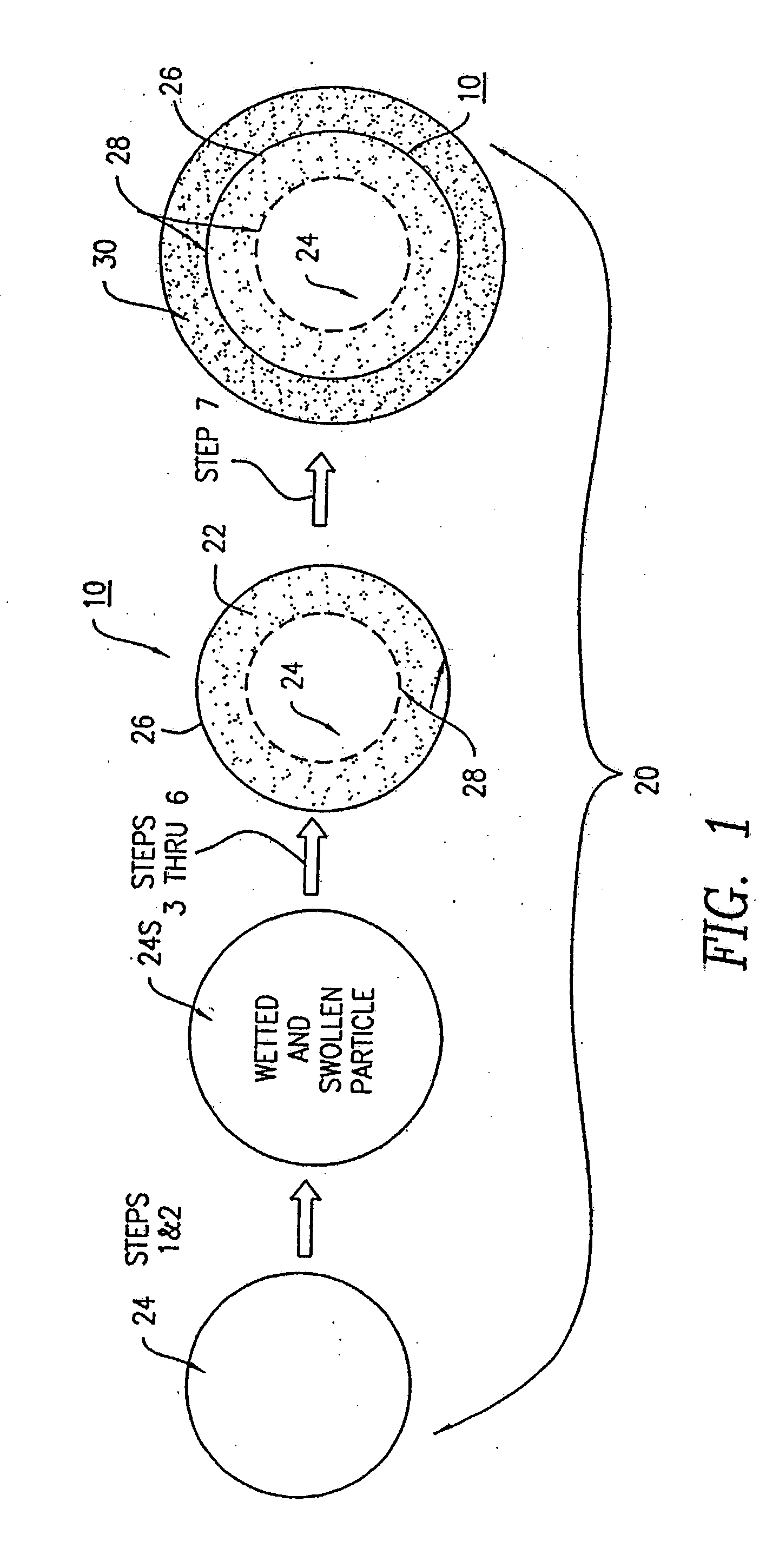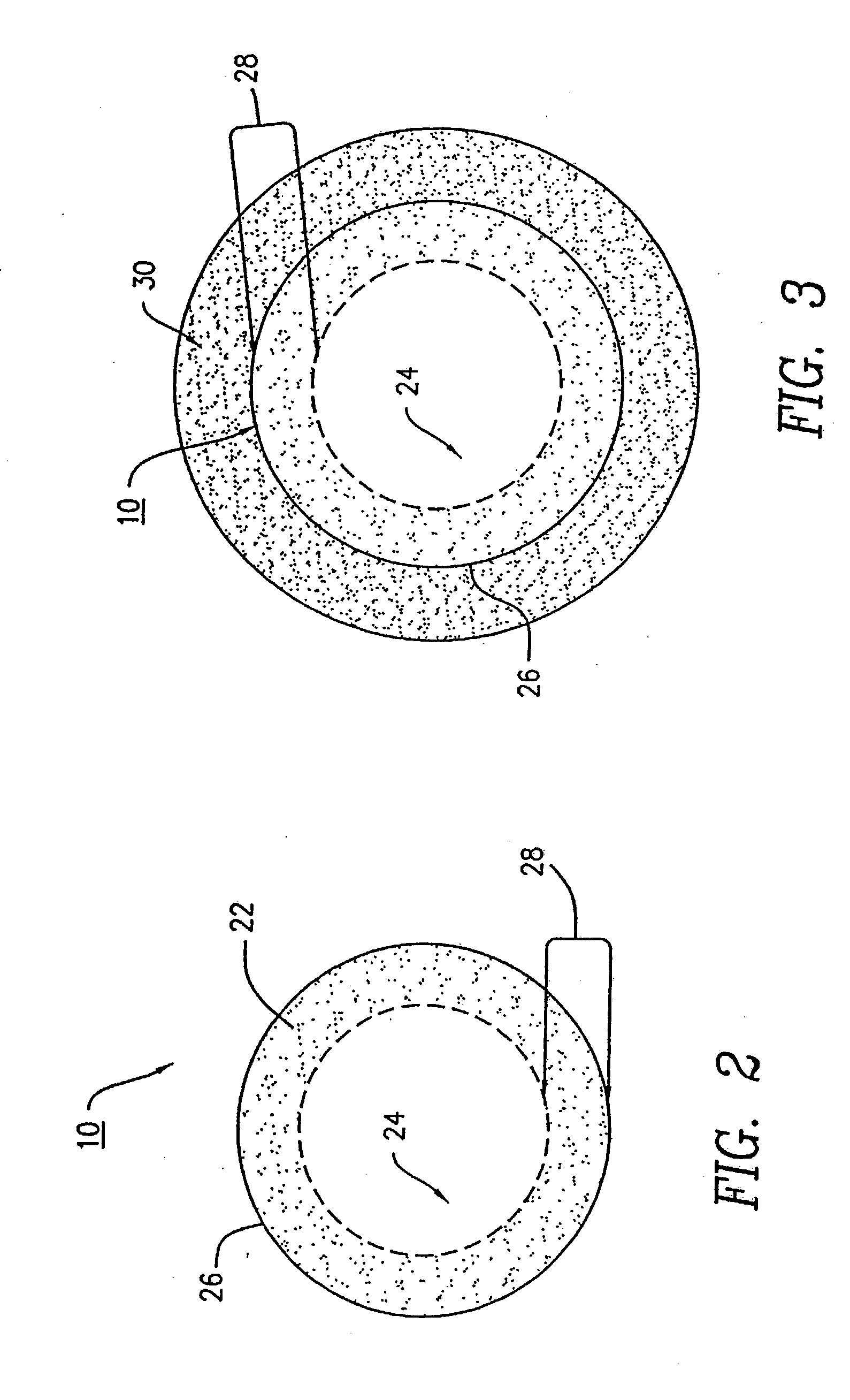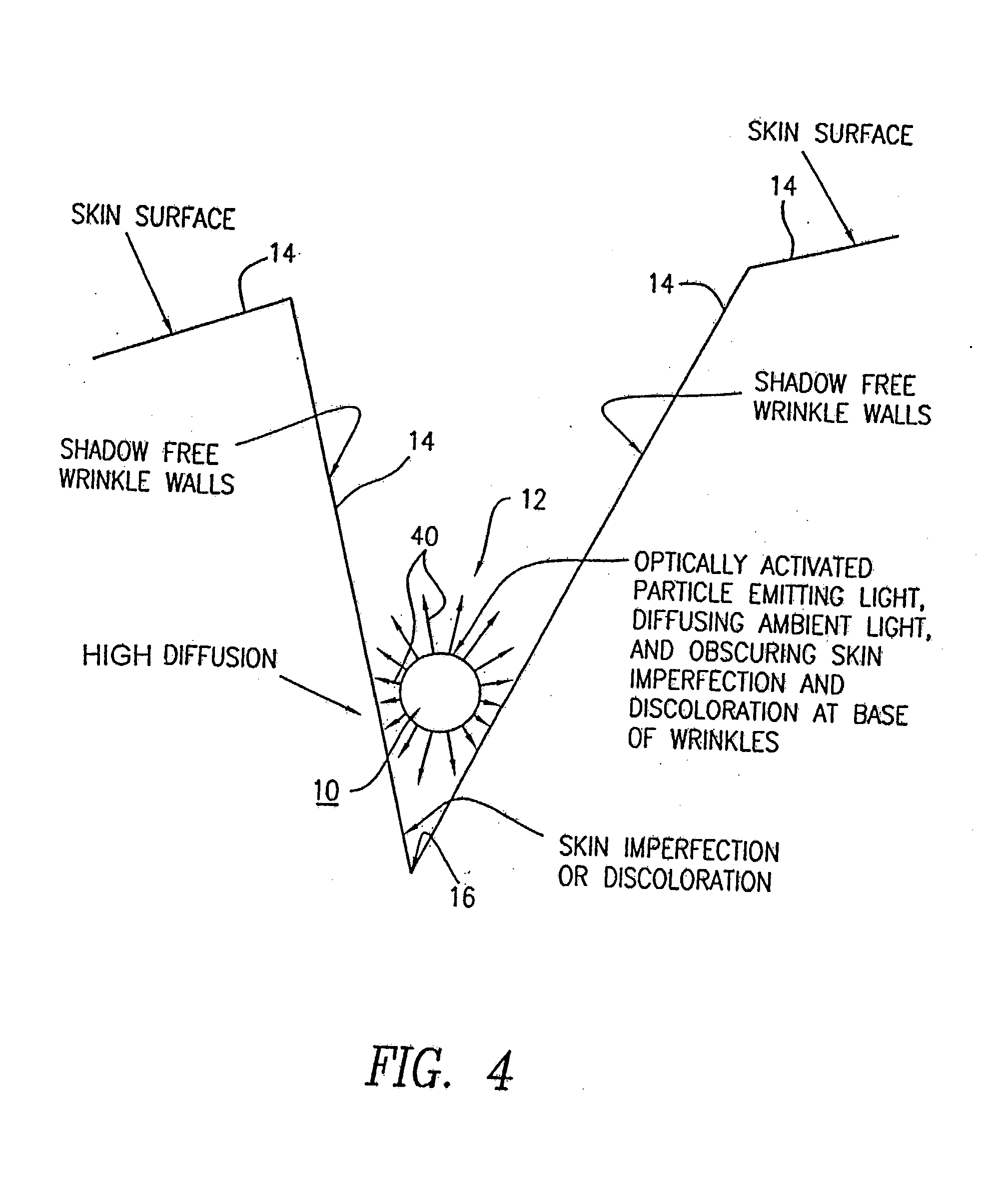Method of using optically-activ ated particles in cosmetic preparations
a technology which is applied in the direction of body powders, hair cosmetics, drug compositions, etc., can solve the problems that no prior art patents teach or disclose the use of optical activation and bonded particles in cosmetic preparations, and no prior art patents teach or disclose the use of optical activation and bonded particles
- Summary
- Abstract
- Description
- Claims
- Application Information
AI Technical Summary
Benefits of technology
Problems solved by technology
Method used
Image
Examples
example 1
[0032] Propylene glycol (875 g) and PEG 200 (125 g) were added to a 3-L round bottom flask equipped with an overhead stirrer, condenser and heating mantle. Nylon-12 powder was added slowly over 15 min. The mixture was stirred for an additional 15 min, Leucophor BSB solution (Clariant, 50 g) was added and the mixture was stirred at room temperature for 10 min. Distilled water (950 g) was added and the mixture was then slowly heated to 90.degree. C. with a ramp rate of 1-2.degree. C. / min. The temperature was held at 90.degree. C. for 30 min., then allowed to cool to room temperature. The mixture was filtered in a Buchner funnel and the white powder was washed with four 1200 mL portions of distilled water and air dried to yield a wet powder which was then dried in an oven at 75.degree. C. for 15 hr to yield a dry white fluorescent powder. Spectrophotometric analysis of the wash solutions indicated that the product contained 0.3% fluorescent compound.
example 2
[0033] The procedure from Example 1 was repeated except the reaction temperature was raised to 100.degree. C. Analysis indicated that the product contained 0.4% fluorescent compound.
example 3
[0034] The procedure from Example 2 was repeated except nylon-6 powder was used instead of nylon-12 powder. Analysis indicated that the product contained 0.5% fluorescent compound.
PUM
| Property | Measurement | Unit |
|---|---|---|
| temperature | aaaaa | aaaaa |
| temperature | aaaaa | aaaaa |
| temperature | aaaaa | aaaaa |
Abstract
Description
Claims
Application Information
 Login to View More
Login to View More - R&D
- Intellectual Property
- Life Sciences
- Materials
- Tech Scout
- Unparalleled Data Quality
- Higher Quality Content
- 60% Fewer Hallucinations
Browse by: Latest US Patents, China's latest patents, Technical Efficacy Thesaurus, Application Domain, Technology Topic, Popular Technical Reports.
© 2025 PatSnap. All rights reserved.Legal|Privacy policy|Modern Slavery Act Transparency Statement|Sitemap|About US| Contact US: help@patsnap.com



